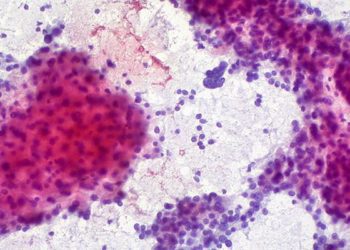Paternal factors found to significantly influence certain adolescent sexual behaviours
Image: CC
Key findings:
- Paternal factors are independently associated with adolescent sexual behaviour relative to maternal factors.
- Paternal communication, as opposed to paternal attitudes, about sex was most associated with adolescent sexual behaviour.
Primer: Adolescence is a developmental stage associated with changing behaviours and activities, including risk-taking behaviours that may contribute to negative sexual health outcomes. The role of families in supporting adolescent development and reducing risk-taking behaviours has been well-documented. Risk-taking behaviours include increased sexual activity and decreased condom use, putting adolescents at risk for sexually transmitted infections and pregnancy. Specifically, the literature has shown a correlation between a healthy mother-adolescent relationship (i.e., closeness, frequency of communication, self-disclosure about dating experiences during adolescence) and positive adolescent behaviours (i.e., increased contraceptive use, decreased sexual-risk taking).
Although the effects of a positive mother-adolescent relationship have been well-studied, the influences of the father have not. In theory, both the mother and father may influence the sexual behaviours of their child, independent of one another. This study aimed to explore paternal influences on adolescent sexual risk behaviours.
For further reading, please see the following studies:
- Henry-Reid LM, O’Connor KG, Klein JD, et al. Current pediatrician practices in identifying high-risk behaviors of adolescents. Pediatrics 2010;125(4):741-7.
- Akers AY, Holland CL, Bost J. Interventions to improve parental communication about sex: A systematic review. Pediatrics 2011; 127(3):494–510.
This [literature review] study: Numerous electronic databases were searched for relevant studies between 1980 and 2011. The studies targeted American adolescents between 11 to 18 years of age, examined adolescent sexual behaviours or reproductive outcomes, and focused on paternal parenting factors. The definition of “father” included biological fathers, step-fathers, adoptive fathers, or even uncles or grandfathers if they represented primary male caregivers. A total of 13 articles were identified and reviewed. Some interesting findings include:
- Sexual debut of the adolescent was significantly associated with paternal attitudes toward adolescent sexual behaviour;
- Frequency of sex was not associated with paternal influences;
- Number of sexual partners was weakly associated with paternal self-restraint;
- Contraceptive use was significantly associated with paternal tolerances of adolescent sexual behaviour;
- Pregnancy was not correlated with paternal influences.
In sum: Although much research has focused on the influences of the mother, there seems to be a significant correlation between various aspects of paternal influence and sexual behaviour in adolescents. Limitations of the study include reliance on cross-sectional methodology and a focus on onset of sexual activity, as opposed to broader aspects of sexual behaviour.
From a public health perspective, these findings suggest that interventions aimed at reducing adolescent sexual risk behaviour may need to also consider the role of the father. To reduce sexual risk behaviours, it may be important to examine what parenting practices, including those of the father, are amenable to change and can have a significant impact on adolescents. Critical opportunities may be missed if fathers, who are clearly key figures in other aspects of child development, are not identified as potential targets for change. Further research in this area may be warranted to better inform paediatricians and public health practitioners with regards to best practice in involving fathers to improve adolescent development.
Click to read study in Pediatrics
Written by [GL] and [AC]
© 2012 2minutemedicine.com. All rights reserved. No works may be reproduced without written consent from 2minutemedicine.com. DISCLAIMER: Posts are not medical advice and are not intended as such. Please see a healthcare professional if you seek medical advice.





